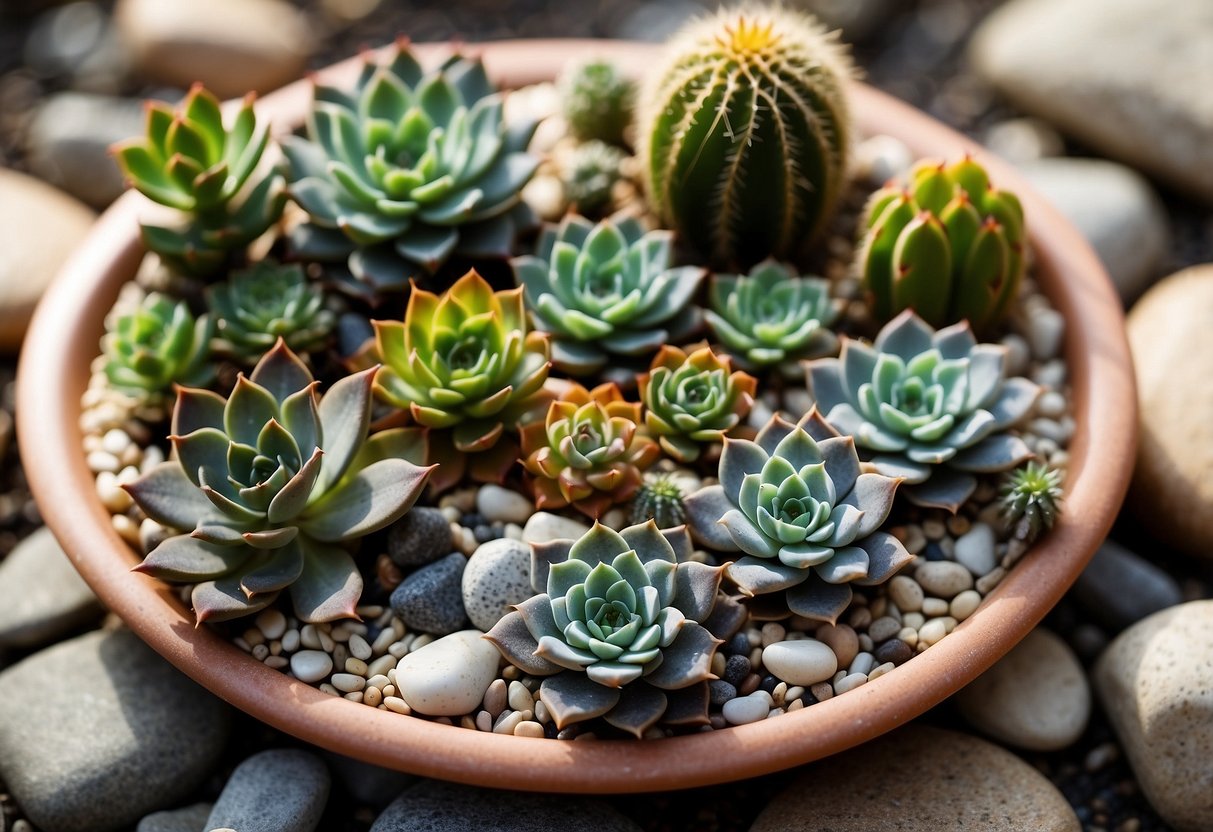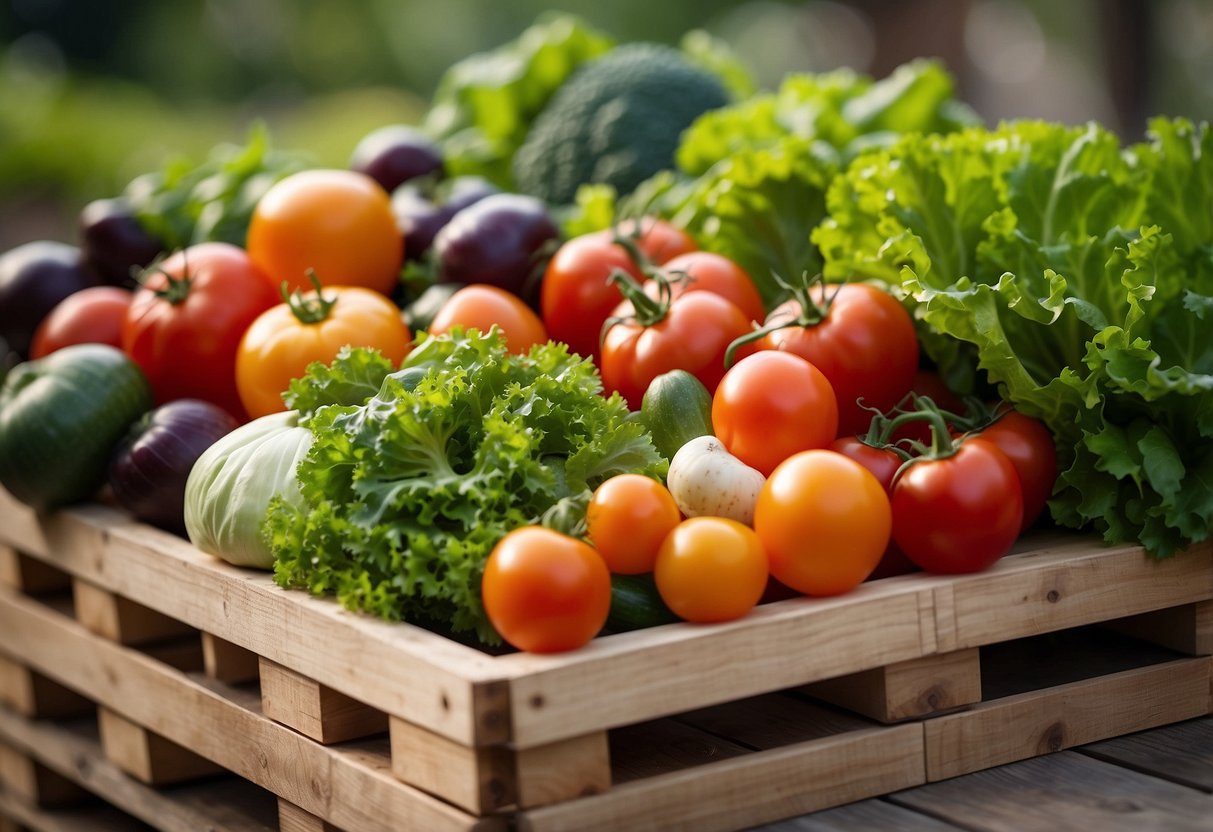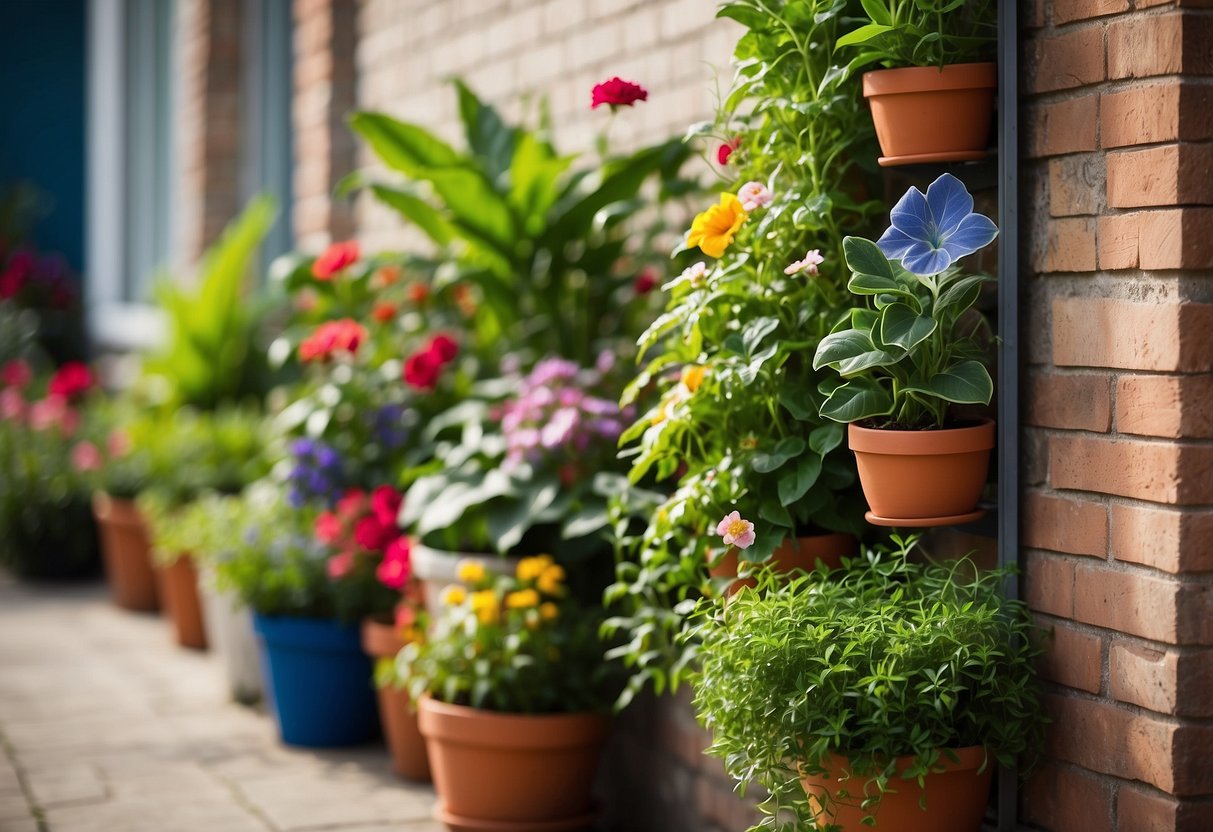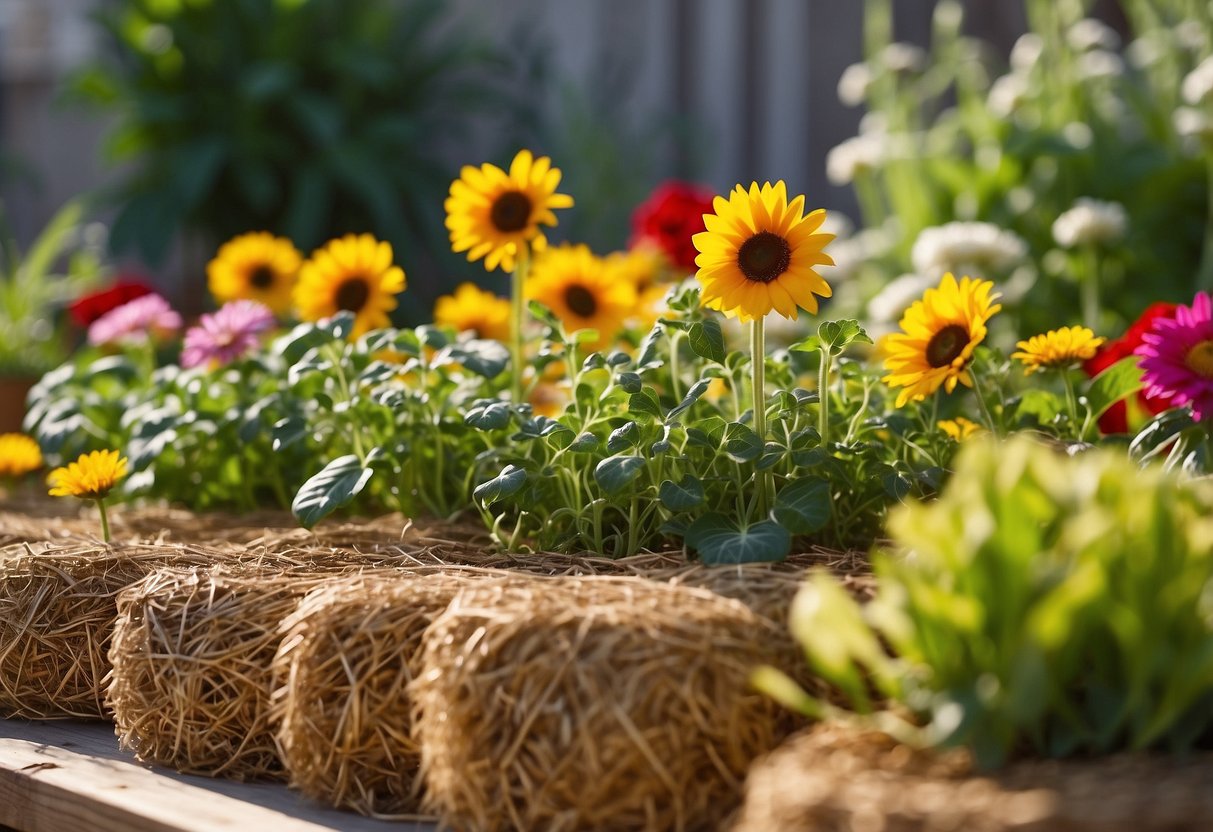Easy Dish Garden Ideas: Simple and Stylish Indoor Gardening Tips
If you’re looking for an easy and fun way to add some greenery to your home, dish gardens are a perfect choice. They require minimal space and effort but can bring a lot of beauty to any indoor or outdoor area. Dish gardens are simple to create and maintain, making them ideal for beginners or those with limited gardening experience.

You can use a variety of plants, from succulents to small ferns, to design a unique and vibrant display. With just a few materials and some creativity, you’ll be able to craft a stunning garden that fits right on your windowsill or kitchen table.
1) Herb Spiral Garden

An Herb Spiral Garden is a wonderful way to grow your favorite herbs in a small space. You can build one using larger stones for the bottom and smaller ones for the top.
Fill the spiral with soil and plant herbs like rosemary, oregano, and thyme at the top. These herbs prefer more sun and drier soil.
At the bottom, plant herbs like parsley and cilantro that need more moisture. The spiral shape makes it easy to care for different types of plants with different needs. For more details, you can follow this tutorial.
2) Tiered Planter Boxes

Tiered planter boxes are great for adding height and layers to your dish garden. They create a cascading effect with multiple levels of plants.
Start by stacking smaller pots on top of larger ones. Fill each pot with soil and press down to secure them. This method is simple, yet visually appealing.
Use different plants for each layer. For example, you can have flowers on the top tier and herbs on the bottom. This makes your garden more interesting to look at.
For detailed instructions, check out this tutorial on building tiered planter boxes.
3) Pallet Vegetable Garden

Using wooden pallets, you can easily create a functional vegetable garden. Pallets are versatile and can be stacked or laid flat.
To start, get a few clean, sturdy pallets. Fill the spaces with dirt, and you can plant vegetables directly into them. This can maximize your growing space.
If you want a vertical garden, secure pots or fabric pockets to the slats. This is perfect for small spaces and keeps your plants organized.
4) Hanging Gutter Garden

A hanging gutter garden is a great way to use vertical space. You can hang it from a pergola or even along a fence. This idea works well for small spaces like balconies or patios.
Start with some strong gutter sections. Make sure they have drainage holes. Securely attach them using brackets or rope.
You can grow various plants in your hanging gutter garden. Herbs like basil and mint, or flowers like petunias and pansies, are good choices. This setup is low-maintenance and adds beauty to any space.
5) Mason Jar Herb Garden

A Mason jar herb garden is a fun and simple project. You’ll need some Mason jars, potting soil, and your favorite herb seeds or small plants. Start by filling the bottom of each jar with pebbles for drainage.
Add soil on top of the pebbles. Plant your herbs and place the jars in a sunny spot. Make sure to water them regularly. Your mini garden will be perfect for fresh herbs right in your kitchen.
For more detailed steps, check out this helpful guide.
6) Raised Bed Garden

Raised bed gardens are perfect for small spaces and beginners. You can build them with materials like untreated wood or rocks.
These gardens help with soil drainage and make it easy to customize soil conditions. Plus, they’re great for keeping pests at bay.
To build one, choose a sunny spot and fill your bed with compost-rich soil. Happy gardening!
7) Vertical Wall Planter

A vertical wall planter is a great way to add greenery to small spaces.
You can attach planters directly to a fence or wall. This method saves ground space and looks amazing.
Using a wood slat wall adds a stylish touch. Place planters on the slats to create a living wall of plants. For ideas and inspiration, check out these DIY vertical garden ideas.
8) Recycled Container Garden

You can turn almost any old item into a charming garden container. An old teapot makes a whimsical planter. Its handle makes it easy to move around too.
Try using a recycled pallet. Paint it and prop it up. It’s a great way to grow extra vegetables.
Consider an upcycled milk jug. It’s simple and practical. Use multiple jugs to create a fun, tiered garden.
For more ideas, check out these recycled garden planters. Get creative and have fun with it!
9) Straw Bale Garden

Creating a straw bale garden is an easy and fun way to grow plants. You start by getting straw bales made from wheat, oats, barley, alfalfa, or rye.
First, water the bales well for three days. Next, sprinkle a high-nitrogen fertilizer on them.
As the straw rots, it releases nutrients for your plants. This method also raises the plants, making it easier on your back.
Common vegetables like cauliflower and broccoli thrive in straw bales, giving you a bountiful harvest.
Find more tips at Farmers’ Almanac and MorningChores.
10) Window Box Planter

A window box planter is a beautiful way to add some greenery to your home. You can easily make your own with some simple materials and tools.
For a unique touch, consider using cedar dog ear fence boards. They are durable and give a rustic look.
Fill your planter with colorful flowers and lush greens. Plants like miniature roses and creeping thyme will thrive in a sunny spot. Enjoy the charm they bring to your windows!
Getting Started with Dish Gardens

To begin a dish garden, you need to select the proper container and choose the right plants that thrive together. Understanding these essentials will set you on the path to a successful and beautiful miniature garden.
Choosing the Right Containers
Choosing the right container is crucial for your dish garden. Shallow containers like bowls or trays work best. These should have a depth of at least 2 inches to allow space for the roots. Avoid containers with drainage holes to prevent water leakage.
Material matters too. Containers made of ceramic, glass, or plastic are popular choices. Each type of material has its own benefits. Ceramic holds moisture well, glass offers a clear view of the soil levels, and plastic is lightweight and affordable.
Ensure the container fits the decor of your space. Decorative containers can add charm and match your home’s style. It’s also helpful to use containers with wide openings, allowing easier plant placement and arrangement.
Selecting Suitable Plants
The right plants are essential for a thriving dish garden. Pick plants that have similar light and water needs. This helps them grow well together. Common choices include succulents, small ferns, and miniature versions of larger plants.
Succulents are popular for their low water needs and diverse shapes. They require bright, direct sunlight. Ferns and mosses prefer shady spots and need regular misting to keep soil moist.
When arranging, consider plant height and spread. Place taller plants in the center or back for a layered look. Compact plants work well around the edges. This arrangement helps each plant get sufficient light and space to grow. Avoid overcrowding, as it can stunt growth and cause health issues.
By carefully choosing your container and plants, you set the stage for an easy and visually pleasing dish garden.
Maintaining Your Dish Garden

Taking care of a dish garden involves regular watering and occasional fertilization. Ensuring proper moisture levels and providing nutrients will keep your plants healthy and vibrant.
Watering Tips
Watering a dish garden requires attention to detail. Since most containers have no drainage holes, be cautious to avoid overwatering. Check the soil’s moisture level by sticking your finger about an inch deep. If it feels dry, it’s time to water.
Use a spray bottle for plants that prefer light misting, like moss or ferns. For others, a small watering can works well. Adjust the frequency of watering based on the room’s humidity and temperature. In drier conditions, you may need to water more frequently.
Always use room temperature water to avoid shocking the plants. Remember to water slowly, allowing the soil to absorb moisture evenly. Too much water too quickly can create puddles, leading to root rot.
Fertilization Guidelines
Fertilizing a dish garden can boost plant growth and health. Use a balanced, water-soluble fertilizer during the growing season, typically spring and summer. Dilute the fertilizer to half the recommended strength to avoid burning the plants’ roots.
Apply the fertilizer every four to six weeks. Simply mix it with water and apply during regular watering. Be sure not to fertilize stressed plants, like those that are too dry or too wet.
In late fall and winter, reduce or stop fertilization, as most plants enter a rest period. Adding a thin layer of worm compost once a year in the spring can also benefit your dish garden by providing slow-release nutrients. Make sure to use a light hand with fertilizer to keep your dish garden thriving.
Regular care with the right watering and fertilization practices will keep your dish garden healthy and beautiful.
Decorative Ideas for Dish Gardens

When designing a dish garden, adding decorative elements can enhance its beauty and make it stand out. Here are some specific ways to do this.
Adding Decorative Stones
Decorative stones can add a unique touch to your dish garden. They come in various shapes and colors, allowing you to create a visually appealing landscape. Use small pebbles to mimic a natural environment or colorful stones to bring a pop of color.
To create a stone pathway, arrange flat stones in a line across the soil. This can give your garden a miniature trail look. For a more rustic feel, scatter pebbles evenly around the plants. You can also use larger stones as centerpieces, positioning them to draw the eye.
Be mindful of the stone size. Too large stones can overshadow the plants, so it’s best to choose small to medium-sized ones. Also, make sure the stones are clean to avoid introducing pests or diseases into your garden.
Incorporating Mini Figurines
Mini figurines add a playful element to dish gardens. These small decorations can range from tiny animals and fairies to miniature furniture like benches and tables. They can turn your garden into a whimsical scene.
Place a small bench next to a plant to create a resting spot. Adding tiny animal figurines like rabbits or birds can also bring life to your garden. Fairies and gnomes are popular choices and can be tucked among the plants for a magical touch.
When arranging figurines, think about the overall theme. If you’re creating a woodland scene, use forest animals and rustic furniture. For a beach vibe, mini surfboards or seashells can enhance the look. Just ensure the figurines are weather-resistant if your garden is placed outside.







